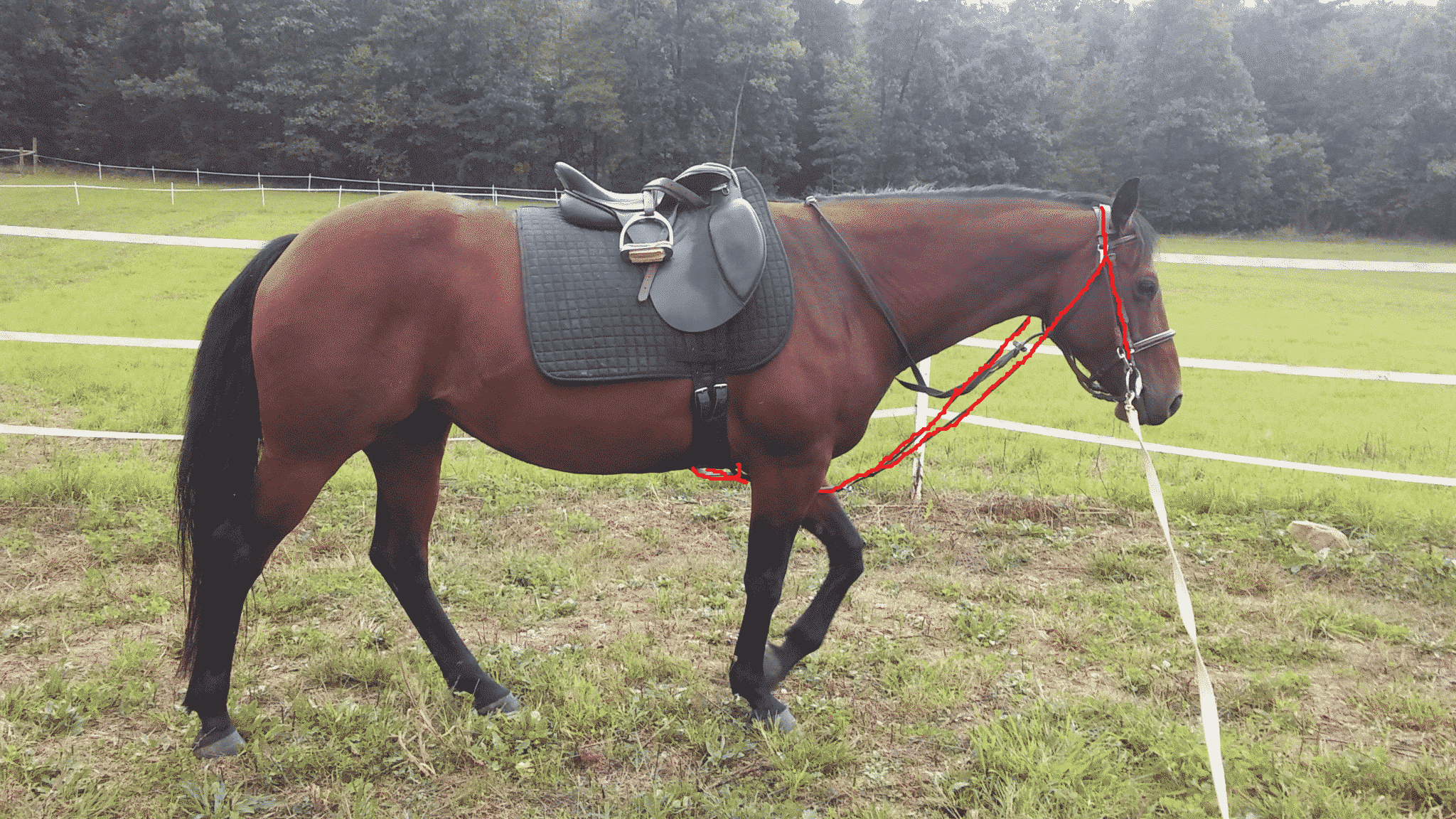
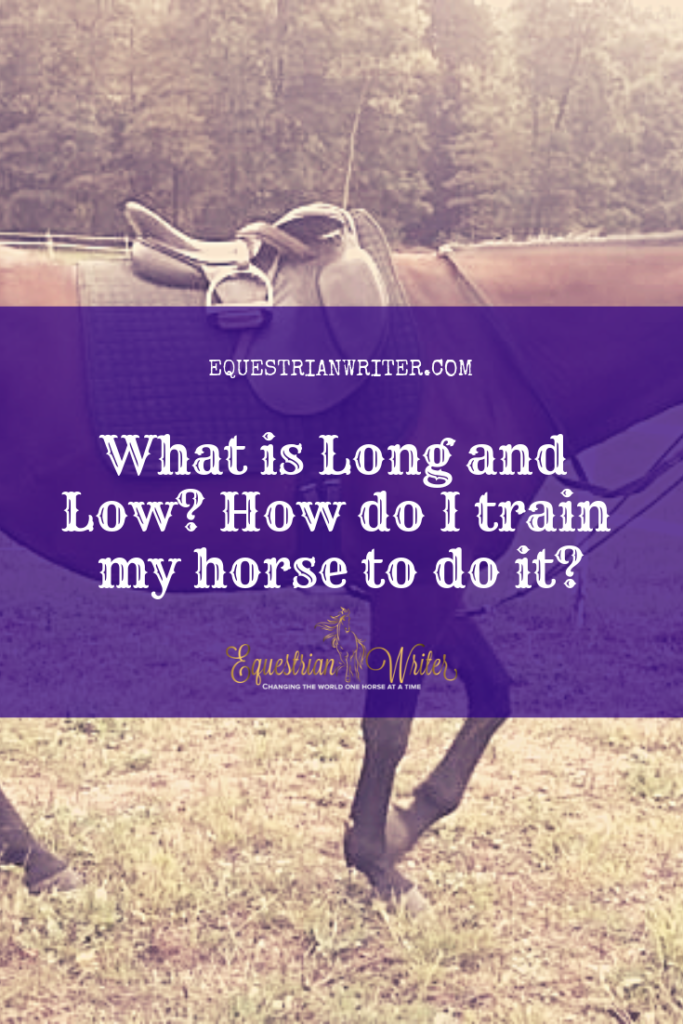
In classical dressage, there is a concept called long and low, also known as stretching which is used in the very beginning stages of collection to develop a correct topline. The exercise elongates the topline and stretches the horse from poll to tail. This creates longitudinal suppleness and strengthens the suspension muscles through the back.
Long and low has been adopted by many other disciplines as an effective means of building topline. The problem with long and low is that it can be difficult for some inexperienced riders to tell the difference between a proper stretch and simply dropping the horse onto the forehand.
The Mechanics of Long and Low
As discussed in yesterday’s Anatomy of Collection article, the nuchal ligament is responsible for pulling the neck up and controlling the top neck muscles, which at the muscles we want to engage and build in long and low. The nuchal ligament connects to the supraspinous ligament which continues along the back and fills out the rest of the topline that long and low focuses on. The brachiocephalicus muscle, on the other hand, is the dreaded lower neck muscle that we want to avoid engaging so it will slowly shrink. The brachiocephalicus muscle is what holds the neck up from below when the horse is tense, while the nuchal ligament is what supports the neck from above when the horse is relaxed. Thus, the goal of long and low is relaxation.

What’s the difference between long and low and dropping the horse onto the forehand?
Long and low, when performed correctly, often results in a low headset – hence the “low” part of the name. But it should not be confused with a horse that is running on the forehand. The difference can be seen in the engagement of the back. If the back is engaged, the horse will be tracking up underneath themselves and their weight will be shifted onto their hindquarters. In the photo below, the horse is not fully stretched down, but you can see how his shoulders are lifted and his hind end engaged. His hind leg is sweeping forward underneath him in a way that would be impossible if he were hollow backed and running on the forehand. His withers is above his hindquarters.
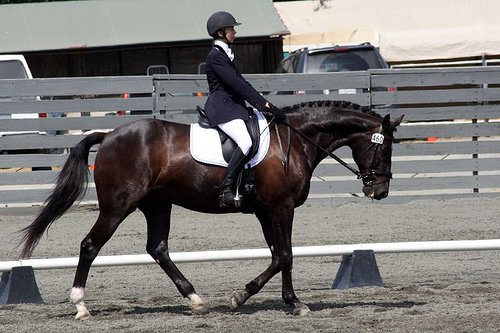
In this photo, you see Moose in the beginning stages of long and low. She had quite a bit of topline built up, but lost a lot of it over my the summer during my battle with seizures when she wasn’t being ridden. This was taken during her first session back doing long and low on the lunge. Moose, as a quarter horse, is built a little down hill, but you can see how proper work is starting level out her movement.
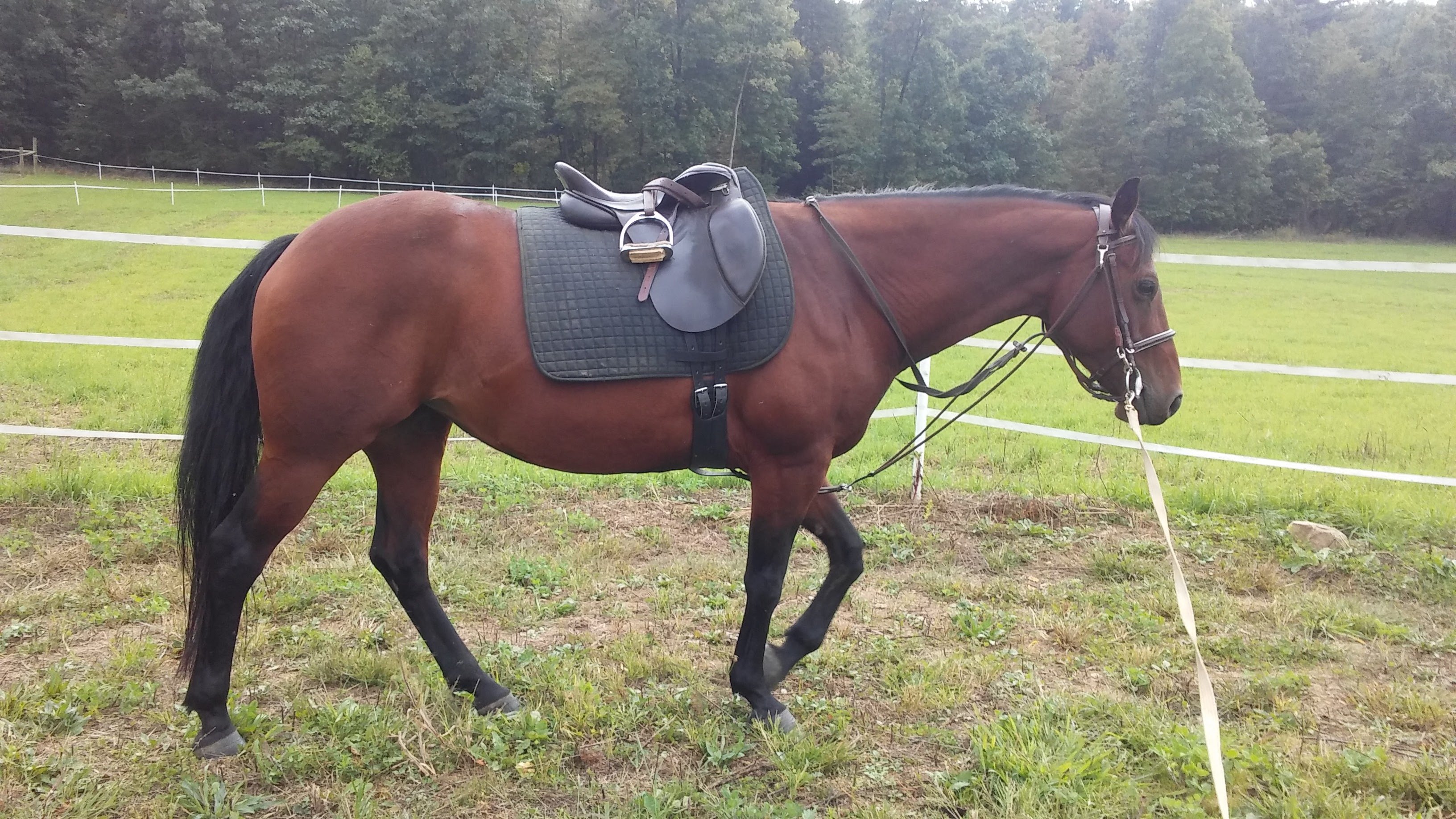
You can see how Moose’s left hind leg does not sweep as far forward as the horse in the photo above because she is in a much earlier stage of conditioning. She also has a slightly longer body, but not by much. She will get the eventually.
Here is a photo from earlier in the session where she is not so level. Her head has come up, her back hollowed out and she is falling on the front end.

How do I teach long and low?
Long and low is first taught on the lung line. First you need your horse to know how to lunge off a snaffle bridle. Click here to read my how to article if you don’t already have experience teaching that. Some people use side reins. However, if you are not already experienced with using side reins, I would recommend only using them under the supervision of your trainer. I personally prefer using a chambon. It can be attached to the girth of a saddle (western or english) or a surcingle. A properly fitted chambon will not force the head down, but will encourage the head down and contact with the bit with slight pressure on the poll. The chambon is highlighted in red below. You can see how loose the chambon is adjusted. Much tighter and Moose would fight against it, defeating the purpose.
Once the chambon is on, you should get your horse moving forward at an even tempo. Watch how the horse is tracking up. The back hoof should be falling in the hoof print of the front hoof. This photo illustrates a good starting point. The head will continue to get lower in subsequent sessions.
A point of caution, do not use a chambon on a horse that is prone to wild spooking or acting up on the lung line as this could cause the horse to get his front hooves caught in the lines. If you have never used a chambon before, consult a professional before proceeding. Also, never use a chambon for more than 5 minutes at a time especially when you are starting out.

What if my horse won’t stretch low?
Moose is a horse that never will go very low. She prefers to focus on stretching out long. She will get lower than this with some more work, but she’ll never be as low as some other horses you see. That’s ok. Some horses go lower while some go longer. As long as they are stretching longitudinally, you don’t have to worry so much about how low they go.







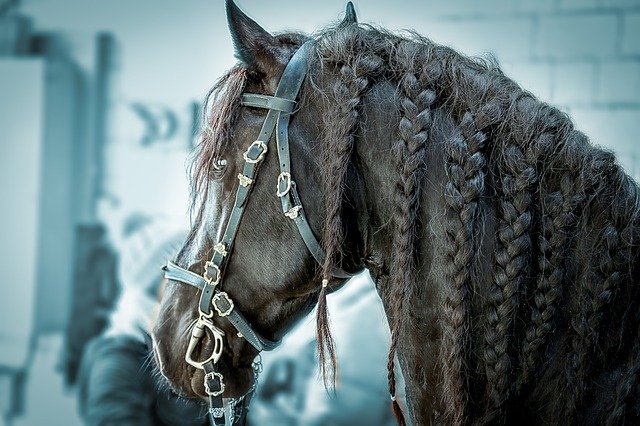
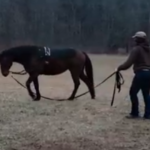
I applaud your effort..however you are distributing poor and inaccurate information ….I do not believe that is your goal…but it the result.
Sorry but that is NOT how to train long and low. You also fail to state the real reasons for long and low. It cannot be done with devices, but thru proper understanding of the horse. That understanding is missing in your article. Just a bad article all around